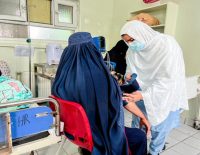Rising cases of Juvenile Arthritis, AIIMS reasons diagnostic delays

An increasing number of children are presenting with joint pain at the All India Institute of Medical Sciences (AIIMS) in New Delhi, raising alarms among pediatric specialists about the delayed diagnosis of Juvenile Idiopathic Arthritis (JIA). Medical professionals emphasize that early detection is crucial to prevent long-term complications, yet many cases are being identified late due to misinterpretation of symptoms.
Understanding Juvenile Idiopathic Arthritis
Juvenile Idiopathic Arthritis is the most prevalent form of arthritis in children under 16, characterized by persistent joint inflammation lasting more than six weeks. Symptoms often include joint pain, swelling, stiffness, and, in some cases, eye inflammation. The condition can lead to joint damage and growth problems if not treated promptly.
Challenges in Early Diagnosis
One of the primary challenges in diagnosing JIA is the overlap of its symptoms with other common pediatric conditions. Children may experience joint pain due to various reasons, leading parents to consult orthopedic specialists initially. This can result in delays in appropriate rheumatological assessment and treatment.
“The subtlety of early symptoms often leads to misdiagnosis or delayed referrals,” noted a pediatric rheumatologist at AIIMS. “Timely recognition and intervention are essential to manage the disease effectively.”
Importance of Early Intervention
Delayed diagnosis of JIA can have significant repercussions. Prolonged inflammation may cause irreversible joint damage, physical disability, and, in cases involving eye inflammation, vision problems. Early treatment can help control symptoms, prevent joint damage, and improve the quality of life for affected children.
Recommendations for Parents and Healthcare Providers
Healthcare experts advise parents to seek medical attention if a child exhibits persistent joint pain, swelling, or stiffness, especially if symptoms last beyond a few weeks. Primary care physicians should maintain a high index of suspicion for JIA and consider early referral to pediatric rheumatologists when appropriate.
“Awareness among parents and primary care providers is key,” emphasized the AIIMS specialist. “Recognizing the signs early can make a significant difference in outcomes.”
The uptick in juvenile arthritis cases at AIIMS underscores the need for heightened awareness and prompt diagnosis. By understanding the signs and ensuring early medical intervention, the long-term impact of JIA on children’s health can be mitigated.







